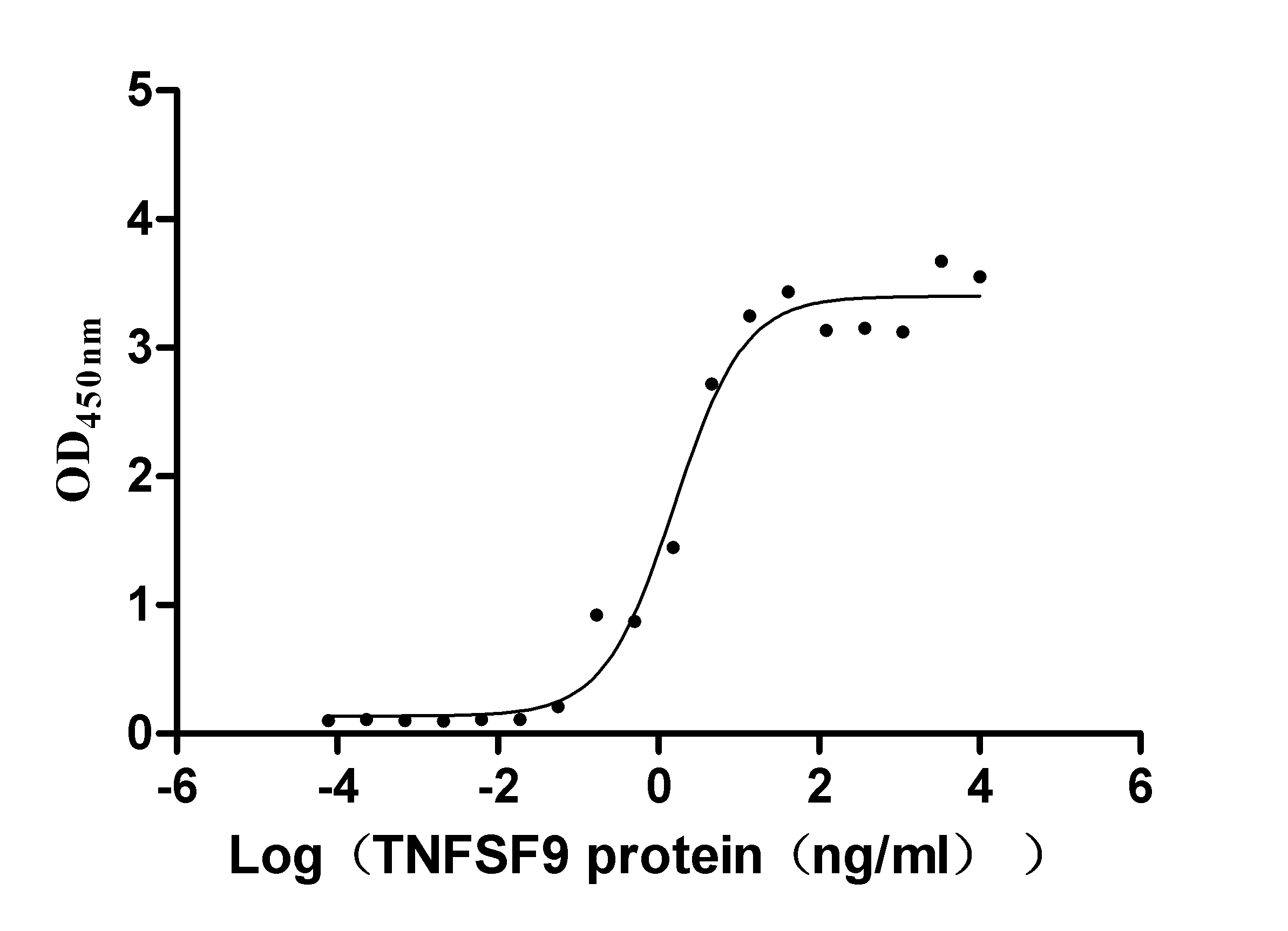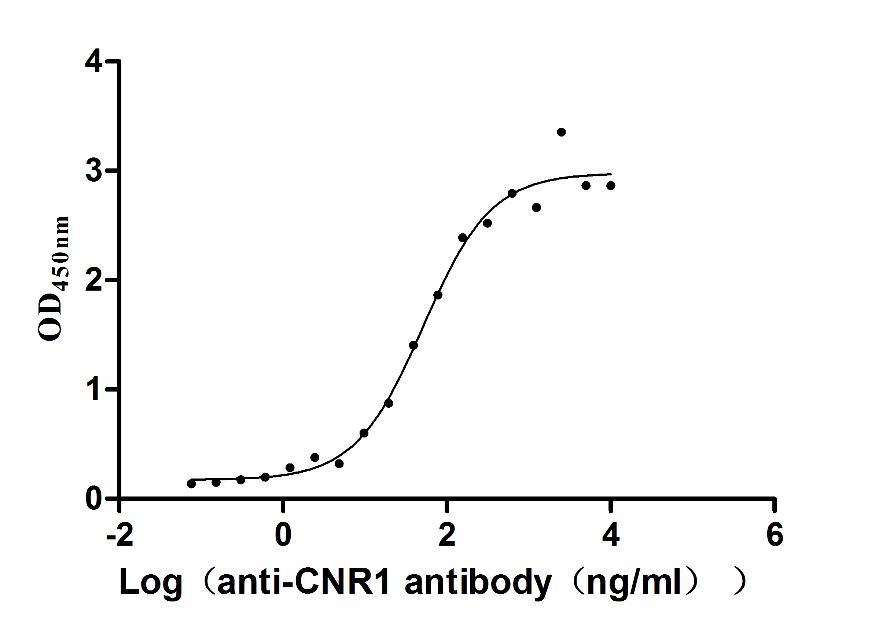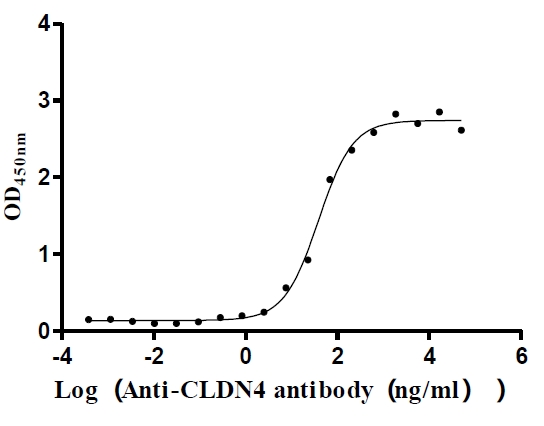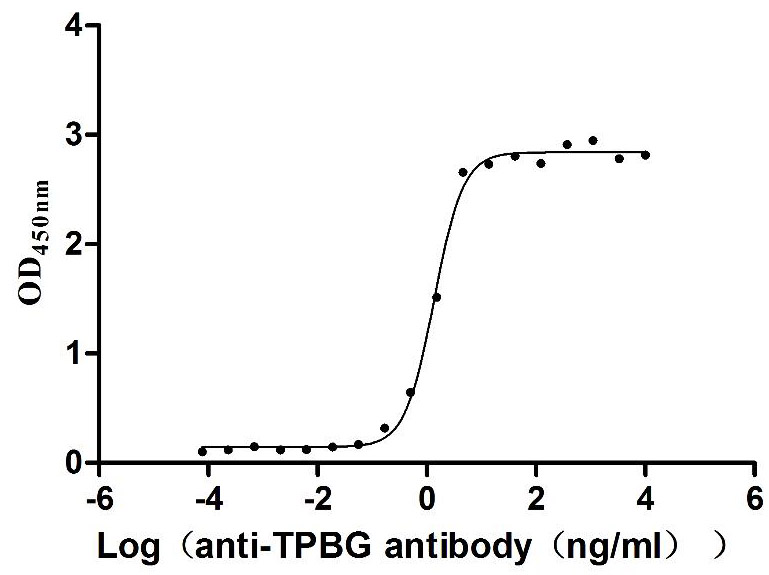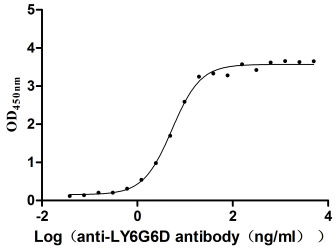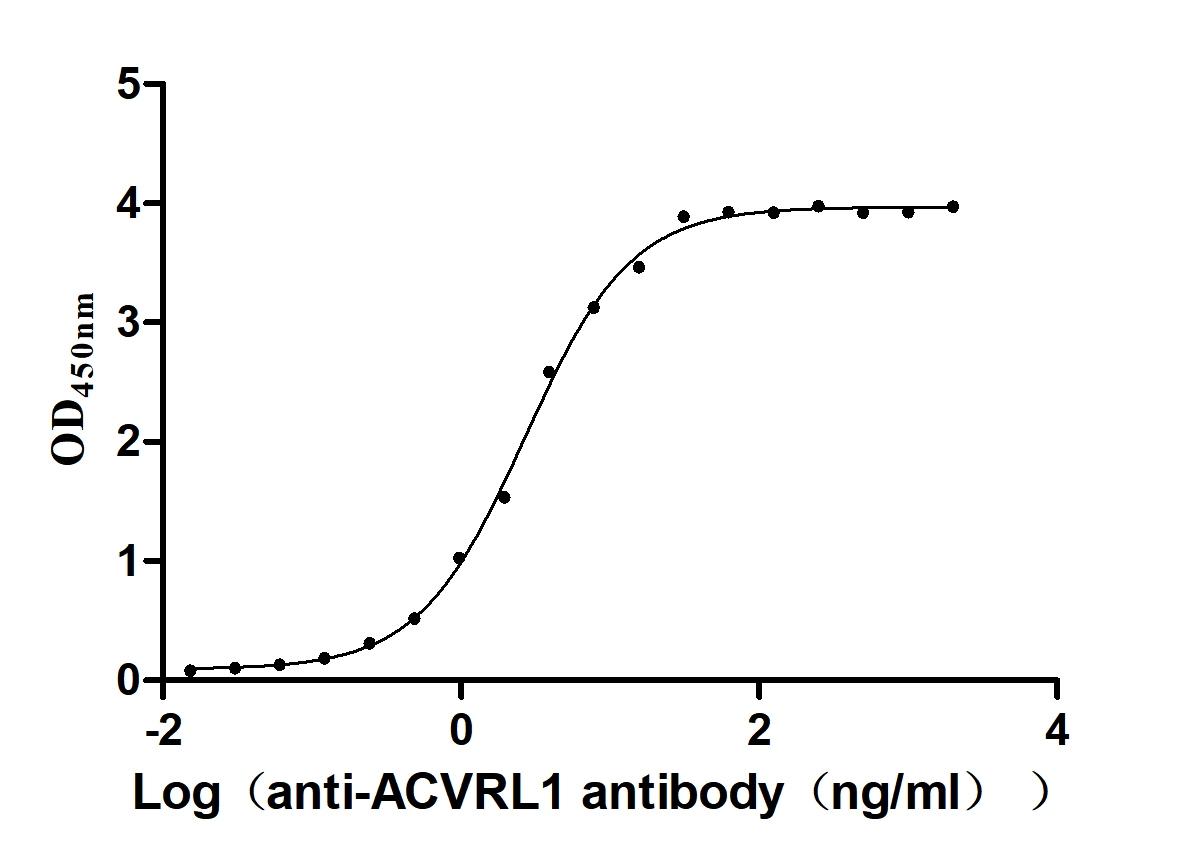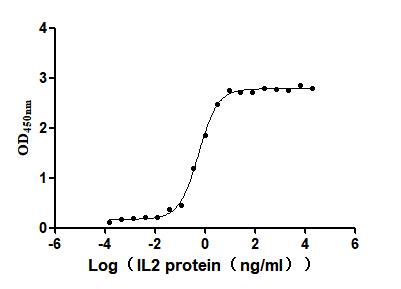Recombinant Arabidopsis thaliana SAL1 phosphatase (SAL1)
-
中文名稱:擬南芥SAL1重組蛋白
-
貨號:CSB-EP670362DOA-B
-
說明書:
-
規格:
-
來源:E.coli
-
共軛:Avi-tag Biotinylated
E. coli biotin ligase (BirA) is highly specific in covalently attaching biotin to the 15 amino acid AviTag peptide. This recombinant protein was biotinylated in vivo by AviTag-BirA technology, which method is BriA catalyzes amide linkage between the biotin and the specific lysine of the AviTag.
-
其他:
產品詳情
-
純度:>85% (SDS-PAGE)
-
基因名:SAL1
-
Uniprot No.:
-
別名:SAL1; FRY1; At5g63980; MBM17.8SAL1 phosphatase; 3'(2'),5'-bisphosphate nucleotidase 1; EC 3.1.3.7; 3'(2'),5'-bisphosphonucleoside 3'(2')-phosphohydrolase 1; DPNPase 1; Inositol polyphosphate 1-phosphatase 1; IPPase 1; Inositol-1,4-bisphosphate 1-phosphatase 1; EC 3.1.3.57; Protein FIERY 1
-
種屬:Arabidopsis thaliana (Mouse-ear cress)
-
蛋白長度:full length protein
-
表達區域:1-353
-
氨基酸序列MAYEKELDAA KKAASLAARL CQKVQKALLQ SDVQSKSDKS PVTVADYGSQ AVVSLVLEKE LSSEPFSLVA EEDSGDLRKD GSQDTLERIT KLVNDTLATE ESFNGSTLST DDLLRAIDCG TSEGGPNGRH WVLDPIDGTK GFLRGDQYAV ALGLLEEGKV VLGVLACPNL PLASIAGNNK NKSSSDEIGC LFFATIGSGT YMQLLDSKSS PVKVQVSSVE NPEEASFFES FEGAHSLHDL SSSIANKLGV KAPPVRIDSQ AKYGALSRGD GAIYLRFPHK GYREKIWDHV AGAIVVTEAG GIVTDAAGKP LDFSKGKYLD LDTGIIVANE KLMPLLLKAV RDSIAEQEKA SAL
-
蛋白標簽:Tag?type?will?be?determined?during?the?manufacturing?process.
The tag type will be determined during production process. If you have specified tag type, please tell us and we will develop the specified tag preferentially. -
產品提供形式:Lyophilized powder
Note: We will preferentially ship the format that we have in stock, however, if you have any special requirement for the format, please remark your requirement when placing the order, we will prepare according to your demand. -
復溶:We recommend that this vial be briefly centrifuged prior to opening to bring the contents to the bottom. Please reconstitute protein in deionized sterile water to a concentration of 0.1-1.0 mg/mL.We recommend to add 5-50% of glycerol (final concentration) and aliquot for long-term storage at -20℃/-80℃. Our default final concentration of glycerol is 50%. Customers could use it as reference.
-
儲存條件:Store at -20°C/-80°C upon receipt, aliquoting is necessary for mutiple use. Avoid repeated freeze-thaw cycles.
-
保質期:The shelf life is related to many factors, storage state, buffer ingredients, storage temperature and the stability of the protein itself.
Generally, the shelf life of liquid form is 6 months at -20°C/-80°C. The shelf life of lyophilized form is 12 months at -20°C/-80°C. -
貨期:Delivery time may differ from different purchasing way or location, please kindly consult your local distributors for specific delivery time.Note: All of our proteins are default shipped with normal blue ice packs, if you request to ship with dry ice, please communicate with us in advance and extra fees will be charged.
-
注意事項:Repeated freezing and thawing is not recommended. Store working aliquots at 4°C for up to one week.
-
Datasheet :Please contact us to get it.
靶點詳情
-
功能:Converts adenosine 3'-phosphate 5'-phosphosulfate (PAPS) to adenosine 5'-phosphosulfate (APS) and 3'(2')-phosphoadenosine 5'- phosphate (PAP) to AMP. May regulate the flux of sulfur in the sulfur-activation pathway by converting PAPS to APS. May play a role in the biosynthesis of sulfate conjugates and RNA processing. Is also able to hydrolyze inositol 1,4-bisphosphate and inositol 1,3,4-trisphosphate. Could be considered as a negative regulator of abscisic acid (ABA)- and stress-responsive genes, through modulating the inositol 1,4,5-trisphosphate (IP3) turnover. Is also involved in salt tolerance. Acts as a suppressor of virus- and transgene-induced silencing.
-
基因功能參考文獻:
- Data indicate that the redox regulation of 3'-phosphoadenosine 5'-phosphate (PAP) phosphatase SAL1 for activation of chloroplast signaling is conserved in the plant kingdom. PMID: 27432987
- These results identified SAL1 as a new component mediating cadmium (Cd) toxicity and established the role of the endoplasmic reticulum stress response in Cd toxicity. PMID: 27044671
- this study revealed several new phenotypes caused by disruption of FIERY1, the decrease in glucosinolate content and in accumulation of sulfur and potassium. PMID: 22724014
- SAL1 regulates its levels by dephosphorylating 3'-phosphoadenosine 5'-phosphate and accumulates in chloroplasts and mitochondria but not in the cytosol PMID: 22128124
- RNA silencing modulated by FRY1 and XRN4 plays an important role in shaping root architecture. PMID: 20807376
- SAL1 acts in the chloroplast compartment to dephosphorylate phosphoadenosine phosphosulfate. Mutation of the SAL1 gene led to deregulated LOX activity and jasmonic acid accumulation. PMID: 20053710
- The ron1-1 mutant and mutants affected in auxin homeostasis share perturbations in venation patterning, lateral root formation, root hair length, shoot branching, and apical dominance. PMID: 20044451
- HOS2 is identical to the FIERY1 gene previously described. PMID: 15500469
- FRY1 modifies hypocotyl length in a light-dependent fashion and affects light signaling through its 3'(2')5'-bisphosphate nucleotidase activity. PMID: 19077168
- SAL1 acts as a negative regulator of predominantly ABA-independent and also ABA-dependent stress response pathways prolonged water stress. PMID: 19170934
顯示更多
收起更多
-
蛋白家族:Inositol monophosphatase superfamily
-
組織特異性:Expressed in roots, leaves, stems, flowers and siliques.
-
數據庫鏈接:
Most popular with customers
-
Recombinant Human Tumor necrosis factor receptor superfamily member 9 (TNFRSF9), partial (Active)
Express system: Mammalian cell
Species: Homo sapiens (Human)
-
Recombinant Human Intestinal-type alkaline phosphatase (ALPI) (Active)
Express system: Mammalian cell
Species: Homo sapiens (Human)
-
Recombinant Human Cannabinoid receptor 1 (CNR1)-VLPs (Active)
Express system: Mammalian cell
Species: Homo sapiens (Human)
-
Recombinant Human Claudin-4 (CLDN4)-VLPs (Active)
Express system: Mammalian cell
Species: Homo sapiens (Human)
-
Recombinant Human Trophoblast glycoprotein (TPBG), partial (Active)
Express system: Mammalian cell
Species: Homo sapiens (Human)
-
Recombinant Macaca fascicularis lymphocyte antigen 6 family member G6D (LY6G6D) (Active)
Express system: Yeast
Species: Macaca fascicularis (Crab-eating macaque) (Cynomolgus monkey)
-
Recombinant Human Serine/threonine-protein kinase receptor R3 (ACVRL1), partial (Active)
Express system: Baculovirus
Species: Homo sapiens (Human)
-
Recombinant Human Interleukin-2 (IL2) (Active)
Express system: Mammalian cell
Species: Homo sapiens (Human)


